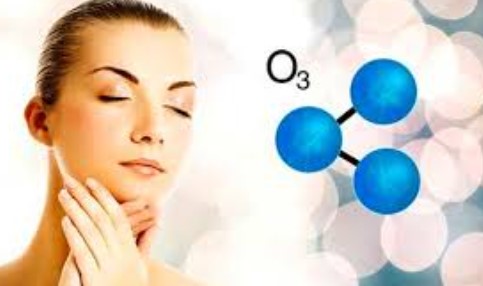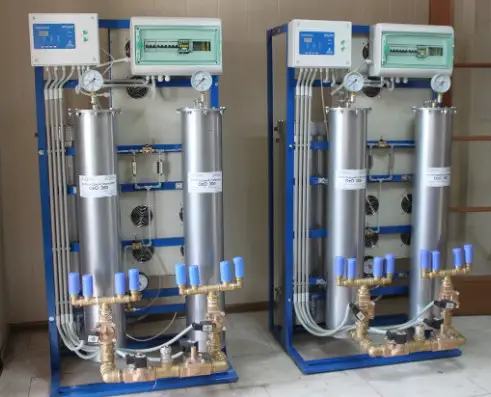Water treatment processes are essential to ensuring the safety and cleanliness of our drinking water. Among the various methods employed, chlorination and ozonation stand out as two primary disinfection techniques. Each method offers unique advantages and limitations, directly impacting their effectiveness and application in water treatment.
Chlorination and ozonation are both used to eliminate pathogens and harmful bacteria from water, but they operate differently. Chlorination involves adding chlorine or chlorine compounds to water, effectively killing bacteria and other microorganisms. Ozonation, on the other hand, uses ozone gas to disinfect water, a process that is chemical-free and leaves no residual disinfectant.
The choice between chlorination and ozonation depends on several factors, including the specific needs of the water treatment process, environmental considerations, and cost. Chlorination is widely used due to its effectiveness and low cost, but concerns over by-products and long-term health effects have led to increased interest in ozonation as a greener alternative. Ozonation is praised for its ability to break down contaminants without leaving harmful residues, making it an environmentally friendly option for water disinfection.

Basics of Water Disinfection
What is Disinfection?
Disinfection is a critical process in water treatment aimed at eliminating pathogens to make water safe for human use. It targets bacteria, viruses, and other microorganisms that can cause diseases, ensuring that water does not pose a health risk to consumers.
Methods Overview
There are several methods used to disinfect water, each with its unique mechanism and application. The most common methods include:
- Chlorination: Adding chlorine to water to kill or deactivate pathogens.
- Ozonation: Using ozone gas as a powerful oxidant to purify water.
- Ultraviolet (UV) Light: Exposing water to UV light to destroy the DNA of harmful organisms.
- Boiling: Heating water to a rolling boil to kill bacteria and viruses.
Chlorination Explained
Chlorine Use in Disinfection
Chlorination has been a cornerstone in water disinfection for over a century. It involves adding chlorine or chlorine compounds to water. This method has a long history, dating back to the late 19th century, and it remains one of the most effective ways to ensure water safety.
Historical Context and How It Works
The use of chlorine for water treatment began in the late 1800s, revolutionizing public health by significantly reducing the incidence of waterborne diseases. Chlorine works by breaking the cell walls of microorganisms and disrupting their metabolic processes, effectively killing them or rendering them harmless.
Pros of Chlorination
Advantages and Effectiveness
Chlorination offers several key advantages:
- Cost-effective: It is one of the most economical disinfection methods.
- Highly effective: Chlorine effectively kills a wide range of pathogens.
- Residual effect: Chlorine can remain in the water, providing ongoing protection against recontamination.
Cons of Chlorination
Drawbacks and Concerns
Despite its benefits, chlorination has drawbacks:
- Chemical by-products: Chlorine can react with organic matter in water to form potentially harmful by-products.
- Taste and odor: It can impart an unpleasant taste and smell to the water.
- Handling and storage risks: Chlorine, especially in gas form, poses risks in handling and storage.
Ozonation Explored
Ozone in Water Treatment
Ozonation uses ozone gas, a strong oxidant, to disinfect water. It’s a chemical-free process that involves generating ozone and mixing it with water to eliminate contaminants.
Overview and Mechanism
Ozone is created by passing oxygen through a high voltage electric field, converting O2 molecules into O3. When introduced to water, ozone attacks and breaks down the cell walls of microorganisms, leading to their destruction.
Pros of Ozonation
Benefits and Environmental Impact
Ozonation offers significant benefits:
- No chemical residues: Ozone decomposes back into oxygen, leaving no harmful by-products.
- Broad-spectrum efficacy: It is effective against a wide array of microorganisms, including those resistant to chlorine.
- Improves water quality: Besides disinfection, ozonation can reduce color, odor, and taste, improving overall water aesthetics.
Cons of Ozonation
Limitations and Cost
However, ozonation also has its limitations:
- Higher initial costs: The equipment and energy required for ozone generation can be more expensive than chlorination systems.
- No residual disinfection: Unlike chlorine, ozone does not provide a residual effect, which means it does not protect water from recontamination as it moves through distribution systems.
- Complexity: The ozonation process is more complex and requires more sophisticated equipment and management than chlorination.
Comparative Analysis
Effectiveness Against Pathogens
When comparing chlorination and ozonation in terms of effectiveness against pathogens, both methods demonstrate high efficacy but through different mechanisms. Chlorination is well-known for its ability to kill a wide range of microorganisms, including bacteria, viruses, and protozoa. Its residual effect ensures that water remains safe as it travels through the distribution system. However, certain pathogens like Cryptosporidium are resistant to chlorine, posing challenges in some scenarios.
Ozonation, on the other hand, has a powerful oxidizing capacity that can destroy almost all bacteria and viruses, including those resistant to chlorination. Its effectiveness extends to complex organisms and can also neutralize some toxins. Unlike chlorination, ozonation works faster and leaves no harmful by-products, making it highly effective for treating high-quality water.
Environmental Impact
The ecological footprints of chlorination and ozonation differ significantly. Chlorination, while effective, can create chlorinated by-products like trihalomethanes (THMs) and haloacetic acids (HAAs), which have been linked to environmental and health concerns. These by-products can accumulate in water bodies, affecting aquatic life.
Ozonation boasts a lower environmental impact due to its lack of persistent chemical residues. The ozone naturally decomposes back into oxygen, leaving no trace in the treated water. This makes ozonation a more environmentally friendly option, particularly attractive for applications where water is directly released into sensitive ecosystems.
Cost Comparison
In terms of financial implications, chlorination is generally more cost-effective for large-scale water treatment applications due to the lower cost of chlorine and simpler infrastructure requirements. The ongoing operational costs are relatively low, making it a popular choice for municipal water treatment facilities.
Ozonation, while offering superior water quality, requires a higher initial investment for ozone generation equipment and more energy to operate. These factors contribute to higher operational costs, making ozonation less economical for large-scale applications. However, for specific uses where water quality and environmental impact are paramount, the investment in ozonation can be justified.
Application Scenarios
When to Use Chlorination
Chlorination is particularly suitable for:
- Municipal water supplies, where cost and efficiency are critical
- Situations requiring a residual disinfectant to protect water during distribution
- Applications where water is heavily contaminated with bacteria and viruses
Examples include large-scale water treatment plants and emergency disinfection in disaster relief operations.
When to Use Ozonation
Ozonation is ideal for:
- Treating bottled water, where taste and odor are important
- Applications sensitive to chemical residues, such as aquariums or swimming pools
- Advanced water treatment processes aiming for the removal of micro-pollutants
Ideal scenarios include specialized industrial processes and high-end municipal treatment facilities focusing on superior water quality.
Safety and Regulations
Health Considerations
Safety aspects of both methods are critical. Chlorination, while effective, requires careful handling and monitoring to avoid over-chlorination and minimize exposure to harmful by-products. Long-term exposure to chlorination by-products may pose health risks, necessitating strict regulatory oversight.
Ozonation, considered safer in terms of chemical exposure, does not leave long-lasting residues. However, handling ozone requires caution due to its toxicity when inhaled, and its high oxidizing power can be corrosive to infrastructure if not properly managed.
Regulatory Standards
Both chlorination and ozonation must adhere to guidelines and compliance standards set by environmental and public health agencies. These regulations specify permissible levels of disinfectants and by-products in drinking water, ensuring that treated water is safe for human consumption. Regular monitoring and compliance with these standards are mandatory for water treatment facilities using either method.
Future Directions
Advances in Disinfection Technology
The field of water disinfection is witnessing innovations and emerging trends aimed at enhancing efficiency, reducing costs, and minimizing environmental impacts. New methods and materials, such as advanced oxidation processes (AOPs) and nanotechnology-based disinfectants, are being explored. These innovations promise to deliver more effective water treatment solutions that can address the limitations of traditional methods like chlorination and ozonation.
Sustainability Focus
The trend towards greener disinfection methods is gaining momentum. The water treatment industry is increasingly focusing on sustainable practices that reduce chemical use, energy consumption, and environmental footprint. Integrating renewable energy sources, recycling treated water, and developing less invasive disinfection methods are part of this shift. The future of water disinfection lies in technologies that provide safe, clean water without compromising the health of our planet or its inhabitants.
Frequently Asked Questions
What is water disinfection?
Water disinfection is the process of removing or killing pathogenic microorganisms in water to make it safe for human consumption. This is crucial for preventing waterborne diseases and ensuring public health.
How does chlorination work?
Chlorination disinfects water by adding chlorine or chlorine compounds. The chlorine reacts with water to form hypochlorous acid, which attacks the cell walls of bacteria and viruses, effectively killing them or rendering them harmless.
Why is ozonation considered environmentally friendly?
Ozonation is considered environmentally friendly because it uses ozone, a powerful oxidant, to disinfect water without leaving toxic residues. Ozone decomposes back into oxygen, leaving no harmful by-products, unlike some chemical disinfectants.
Can ozonation remove odors and colors from water?
Yes, ozonation can effectively remove odors, colors, and even some chemical contaminants from water. Ozone’s powerful oxidizing properties allow it to break down these substances, significantly improving water quality and aesthetics.
Conclusion
In the realm of water treatment, the debate between chlorination and ozonation is driven by the pursuit of efficient, safe, and environmentally friendly disinfection methods. Each technology has its merits and drawbacks, influencing their adoption based on specific water treatment requirements, health considerations, and environmental impacts.
Ultimately, the choice between chlorination and ozonation reflects a balance between ensuring public health, protecting the environment, and managing costs. As advances in water treatment technologies continue, the quest for more effective and sustainable disinfection methods remains a priority, aiming to provide clean, safe drinking water for all.

